- Posts
- Renewable heat
Solar Thermal Plant in Narbonne: 3-Year Performance Review
Hugues Defreville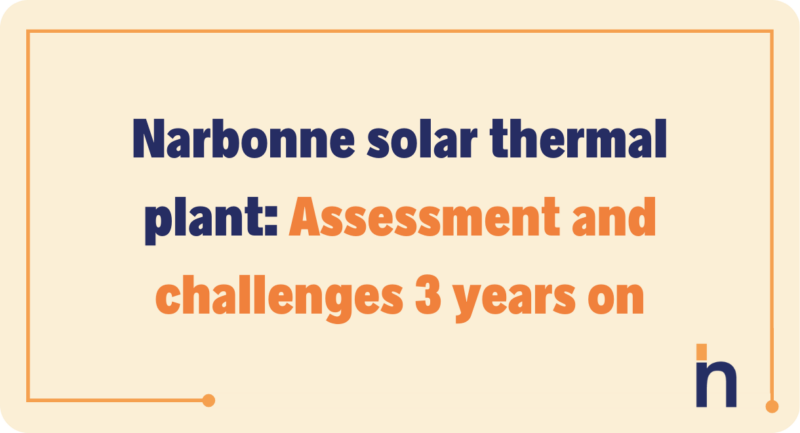
In this article, discover the feedback from our NARBOSOL solar thermal plant in Narbonne, already 3 years after commissioning!
Although this destination, close to Spain, has no shortage of sunshine, we had to overcome a number of technical challenges to ensure its connection to the District Heating Network. We continue to develop and improve this project!
Narbonne solar thermal plant
Genesis
In 2019, Newheat, the city of Narbonne and the operator of its heating network, SNDC (Société Narbonnaise De Chauffage, a subsidiary of Dalkia), agreed to develop a large-scale solar thermal plant to maximize the proportion of renewable energies (RE) on the network in parallel with its development. The network is then supplied by a mixed wood/gas boiler plant of around 9 MW. The aim is to replace, as far as possible, the use of gas boilers by solar energy, covering most of the network’s needs during the summer period, from April to October, when the sun’s rays are strongest.
Technical challenges
The siting of a new plant in a densely populated urban area is impossible, so the project has to be imagined on the outskirts of the city. The site identified generates two technical issues to be addressed:
- The solar plant will be located at one end of the network, and decentralized in relation to the mixed wood/gas boiler plant, as illustrated in the layout plan below.
- The altitude of the plant will be 20 meters, higher than that of the network.

Source: Newheat
Extensive modelling and simulation work on the hydraulic behaviour of the future network configuration was carried out to study the capacity of the solar plant to irrigate the entire network during the summer season, and the maintenance, at all times, of pressure fields compatible with the operation of the existing boiler plant. This work validated the technical feasibility of the project, by choosing a suitable hydraulic configuration and correctly sizing its equipment.
Project data sheet
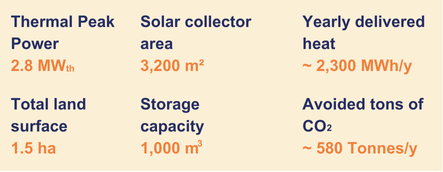
Source: Newheat
The solar plant project consists of a solar field, a thermal storage tank (hot water) to offset periods of solar heat production and consumption by the heating network, and a technical room containing the programmable logic controller (PLC) and all the hydraulic equipment (pumps, valves, heat exchangers, measuring instruments, etc.).
Newheat is in charge of the entire project and bears full responsibility for its various stages (design, development, construction, operation for a 25-year period). The project has received financial support from ADEME’s Fonds Chaleur and the Occitanie Region, and 51% of its financing has been secured by Newheat, with the support of 3 regional energy transition funds, AREC Occitanie, OSER ENR and Terra Energies, which together contributed the remaining 49%.
For more information on the players involved in the project, see the press release published on the occasion of the inauguration in 2021![1]
Plant operating results
Heat supply
Project commisionning as from September 2021, 100% automated. As soon as heat is produced or stored at a sufficiently high temperature to be sent to the grid (which varies according to the season), the solar plant automatically sends an availability signal to the grid. When this signal is received, pumps on the grid side are started up, enabling solar heat to be fed into the grid. Solar heat recovery takes place via an exchanger located in the solar technical room, which redistributes the heat transfer fluid (in this case, hot water) to the solar plant network.
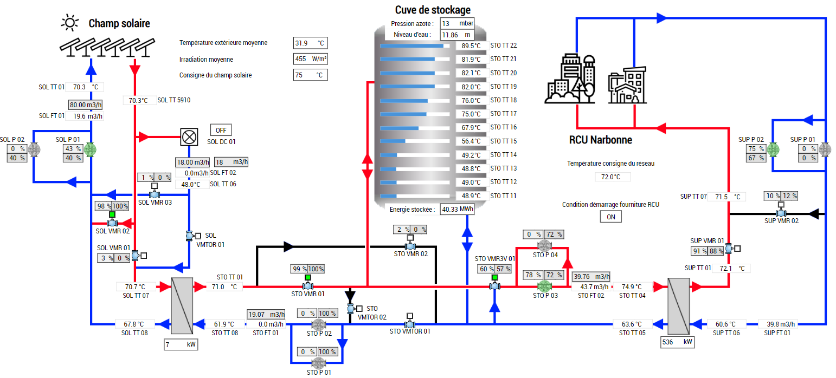
Source: Newheat
Newheat uses remotely accessible supervision technologies to monitor the plant’s operation and modify its parameters to maintain optimal operating conditions. There is also regular contact with the network operator, with the shared aim of maximizing heat production: increasing heat sales for one, and benefiting from competitive, low-carbon heat for the other.
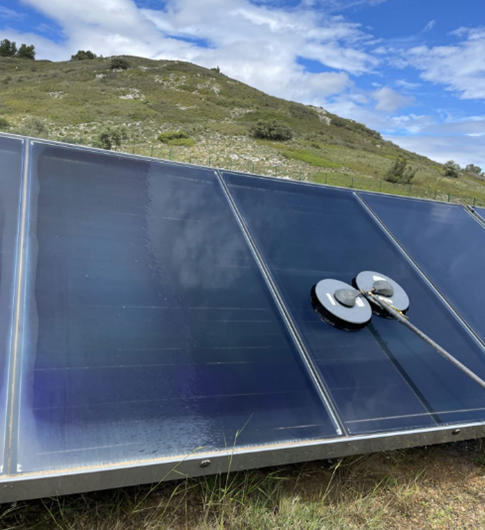
Source: Newheat
By 2023, the plant will have supplied the network with 2,310 MWh, meeting over 17% of the heating network’s annual energy needs and exceeding the initial solar coverage targets, as confirmed by network operator Dalkia.
These results correspond to a solar production of 717 kWh/m²/year, exceeding by almost 8% the productivity target set by the ADEME financing agreement for the project. Maintaining performance also means applying a strict maintenance plan.
In addition to periodic visits to ensure continuity of service over the long term, the performance of the overall system and of each key piece of equipment (heat exchangers, solar collectors, storage tank, etc.) is monitored to ensure that performance is maintained over time. Conditional maintenance operations can be triggered if drops in performance are observed, as was the case for the cleaning of solar collectors in the first half of 2024:
For Didier Mouly, former mayor of Narbonne, it is essential to move forward and consider that this new energy source will contribute to improving the city’s heating network. This sustainable and efficient energy source offers a number of advantages. It reduces the carbon footprint, significantly cuts energy bills for users and offers tangible energy independence.
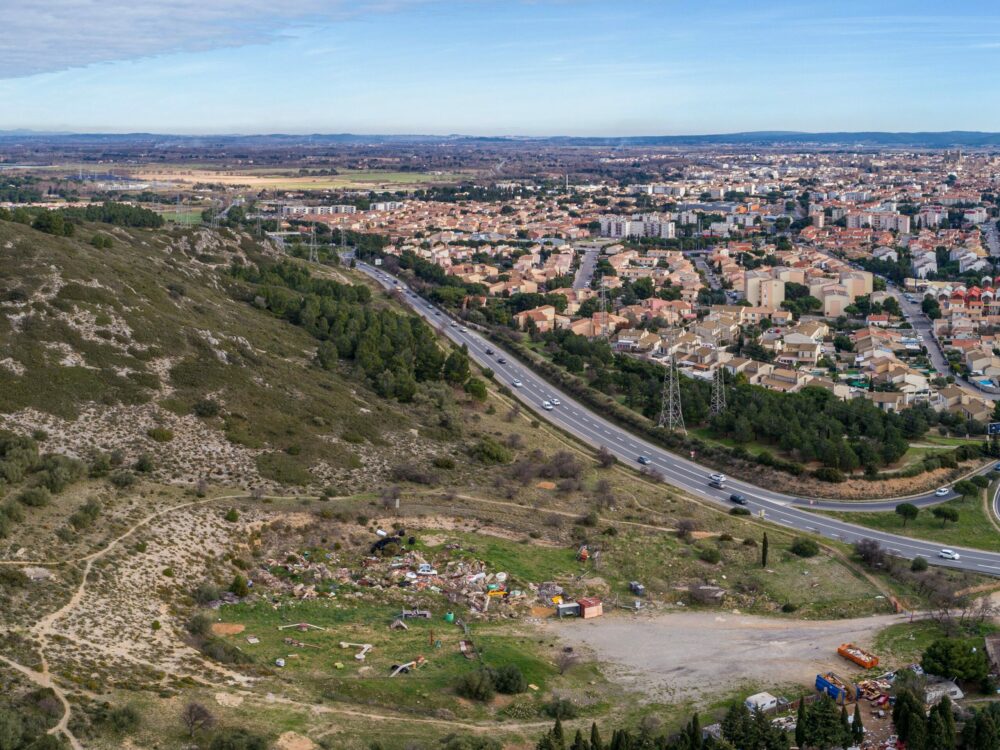
Site before installation of the Narbosol solar thermal plant. Source: Newheat
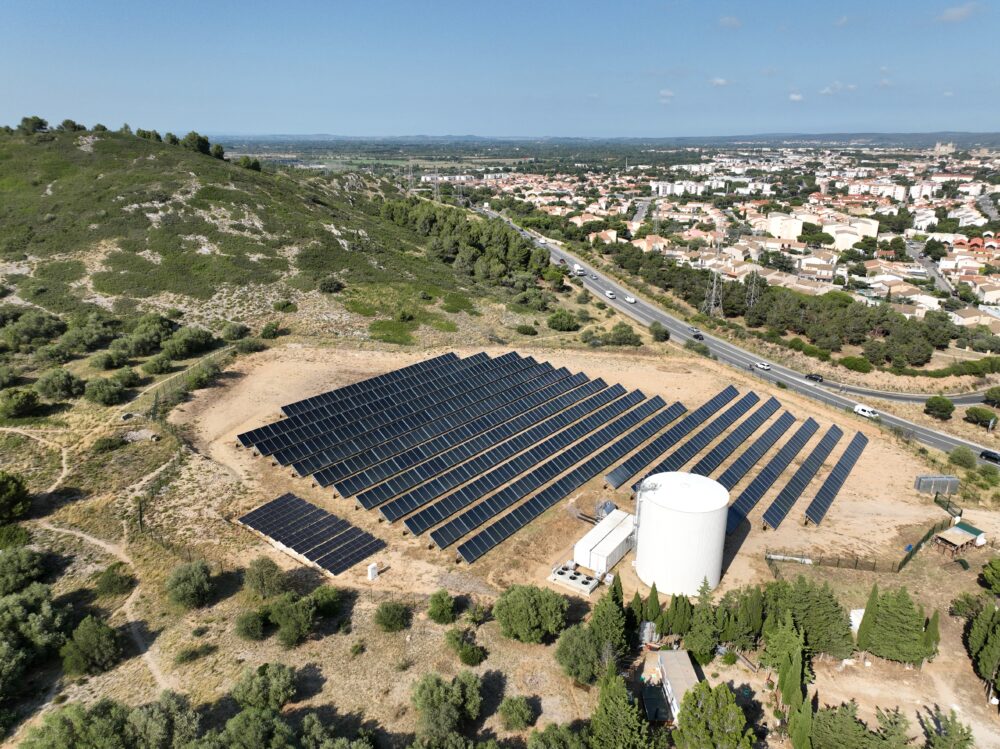
Site after installation of the Narbosol solar thermal plant. Source: Newheat
Environmental impact
In addition to decarbonizing the heat supplied to the city, the solar thermal plant project has enabled the rehabilitation of the land chosen for the plant, which had been used for many years as an unauthorized dump. Moreover, a number of measures were taken as part of the project impact study carried out when the building permit application was submitted, to encourage the return of biodiversity: installation of nesting boxes, insect hotels, reptile shelters, etc. Regular checks are carried out by a naturalist expert to monitor and validate the effectiveness of these measures.
At Newheat, we try to pay as much attention as possible to biodiversity. In some of our projects, we combine solar energy production with sheep grazing. The sheep graze on the grass, while the solar panels (thermal or photovoltaic)[2] capture the sun’s rays to produce heat or electricity. In France, this is known as solar grazing. This is the case at our CONDATSOL and LACTOSOL plants in Verdun, where we have installed solar fields and where 38 and 30 ewes respectively help to maintain the vegetation.
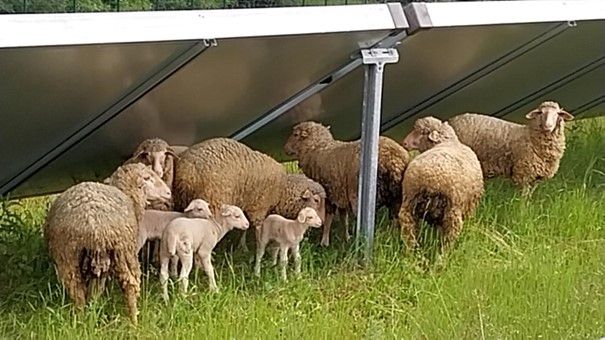
Source: Newheat
A virtuous project that keeps on growing
Adding a photovoltaic solar plant
The initial project continues to gain momentum. In fact, just over a year after commissioning, work was launched to study the benefits of adding a photovoltaic solar plant to the project. The aim is to directly supply part of the electricity needed to operate the solar thermal plant (mainly for its equipment: pumps, valves, etc., which ensure the circulation of water in the system’s various hydraulic loops). In general, it’s a perfect symbiosis. The times when the main equipment of the solar thermal plant needs the most electrical energy – i.e when the sun is shining intensely on it and the pumping system needs to operate to ensure the circulation of water in the solar thermal collectors – correspond precisely to the times when the solar photovoltaic power plant will be most productive.
After studies confirming the technical and economic feasibility of the photovoltaic plant, it is designed, developed and finally commissioned in August 2023. With a peak of 29 kW, it is expected to supply 75% of the solar thermal plant’s electricity needs. In this way, these two types of solar plant – thermal and photovoltaic – work in synergy to maximize the use of renewable energy on site[3].
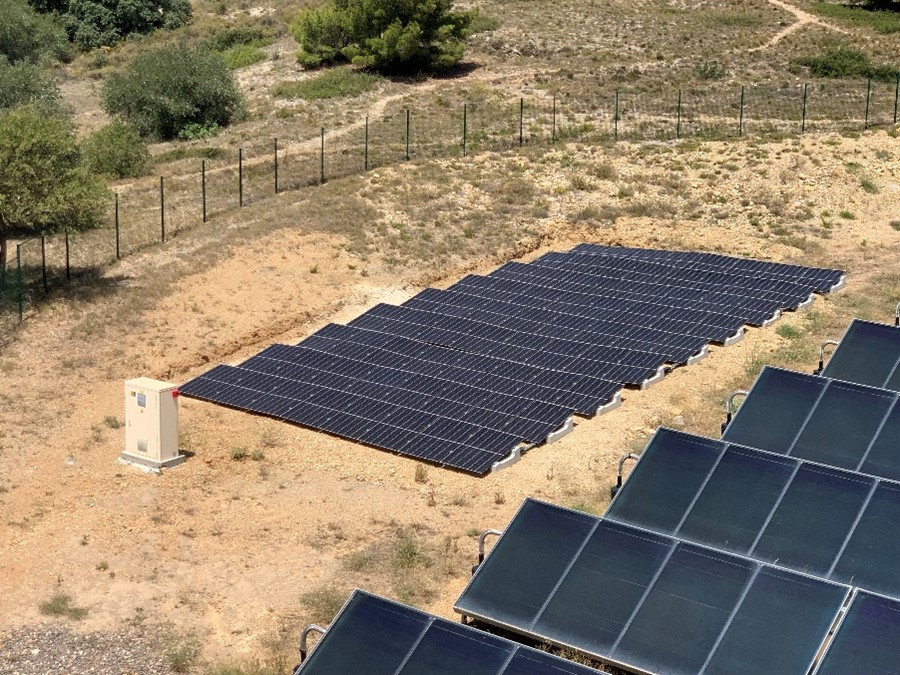
Source: Newheat
And the story isn’t over yet, as new energy projects may well be in the pipeline…
After reading this article, are you convinced of the benefits of solar energy or a storage solution for supplying renewable heat to a district heating network, and would like to study these solutions in more detail?
Don’t hesitate to contact us !
[1] Press release
[2] Are you confused between the notions of solar panel vs. solar collector? Thermodynamic or thermal? Parabolic trough collectors, Fresnel mirrors or parabolic disks? Don’t panic, we’ve listed all solar collector technologies in a dedicated article: https://newheat.com/en/renewable-heats-glossary/.
[3] Learn more about the benefits of combining these two installations: https://newheat.com/en/how-does-solar-thermal-energy-work/
Find out more about the project, from implementation to initial results: here